Introduction
Crab meat is a delicious, protein-rich seafood that is loved by food enthusiasts worldwide. Whether enjoyed in succulent crab cakes, creamy dips, or fresh salads, this seafood delicacy offers a unique, sweet flavor and a tender texture that’s hard to resist. But not all crab meat is the same—different types, from jumbo lump to claw meat, have distinct characteristics that make them ideal for various dishes.
In this guide, we’ll explore everything you need to know about crab meat—its types, health benefits, cooking methods, and sustainability. Whether you’re a seafood lover or just starting to experiment with crab-based dishes, this article will provide expert insights to help you make the best choices.
Now, let’s dive in!
Table of Contents
What is Crab Meat?
Crab meat is the edible flesh extracted from various species of crabs, prized for its delicate, slightly sweet flavor and soft, flaky texture. It’s a staple in many cuisines, from Asian stir-fries to American seafood boils. Depending on the crab species and the part of the body it comes from, crab meat varies in taste, texture, and culinary use.
Overview of Crab Meat
Crab meat comes from the legs, claws, and body of crabs, with each section offering a different texture and flavor profile. The meat can be fresh, frozen, canned, or pasteurized, making it accessible year-round. While fresh crab meat is often preferred for its superior taste and texture, canned crab meat is a convenient alternative for quick and easy recipes.
Different Types of Crab Meat
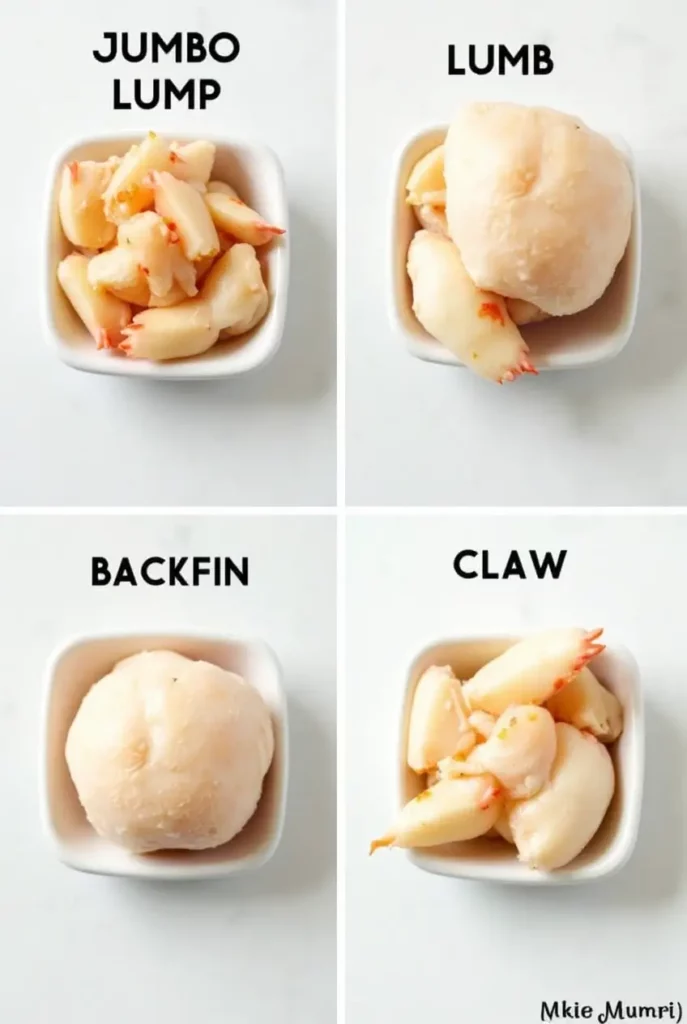
There are several grades of crab meat, each serving a unique purpose in cooking:
- Jumbo Lump – The most premium grade, consisting of large, firm chunks of white meat. Perfect for crab cocktails and high-end seafood dishes.
- Lump – A mix of smaller chunks of white meat, excellent for crab cakes and salads.
- Backfin – Flaky white meat that works well in stuffings and dips.
- Claw Meat – Darker, more flavorful meat that’s ideal for soups, stir-fries, and curries.
Common Uses in Culinary Dishes
Crab meat is incredibly versatile and can be used in a variety of dishes. Some of the most popular ways to enjoy it include:
- Crab Cakes – A beloved seafood dish featuring seasoned lump crab meat, breadcrumbs, and spices.
- Crab Dip – A creamy appetizer made with cheese, herbs, and spices.
- Crab Salad – A refreshing mix of crab, vegetables, and dressing.
- Seafood Pasta – Crab meat pairs beautifully with garlic butter, white wine, and pasta.
- Sushi & Rolls – Imitation or fresh crab meat is a staple in many sushi rolls, like the California roll.
As we continue, we’ll explore the different types of crabs that provide the best-tasting crab meat, followed by insights into its nutritional benefits. Stay tuned!
Types of Crab Meat and Their Best Uses
Crab meat comes in different textures, flavors, and qualities, making it perfect for a variety of recipes. From premium jumbo lump to budget-friendly claw meat, each type has its own best use in the kitchen. Whether you’re making crab cakes, soups, or pasta dishes, understanding these differences will help you make the most of your seafood.
Jumbo Lump Crab Meat: The Premium Choice
This is the highest-quality crab meat you can buy. It consists of large, firm chunks from the swimmer fins of the crab. Because of its delicate texture and sweet flavor, it’s best used in crab cocktails, fresh seafood salads, or lightly seasoned dishes where the crab can shine on its own.
Lump Crab Meat: Versatile and Delicious
A mix of smaller white meat pieces, lump crab meat is ideal for recipes that need texture without sacrificing quality. It’s the go-to choice for classic crab cakes, as it holds together well while still offering a tender bite. It also works great in stuffed seafood dishes and pasta recipes.
Backfin Crab Meat: Great for Crab Cakes
Backfin consists of flaky white meat mixed with smaller broken pieces of lump crab meat. While not as chunky as jumbo lump, it’s still flavorful and perfect for crab cakes, dips, and casseroles. If you’re looking for a budget-friendly way to add authentic crab flavor to a dish, backfin is a great option.
Claw Meat: Budget-Friendly and Flavorful
Claw meat is darker, slightly firmer, and has a stronger flavor compared to other types. This makes it perfect for boldly seasoned dishes like curries, stir-fries, soups, and gumbos. While it’s less expensive than lump or jumbo lump, it still delivers a rich seafood taste.
If you’re looking for an easy crab recipe, check out this Crab Cake Recipe (Whole30) that pairs perfectly with different types of crab meat.
Top Crab Species for the Best Crab Meat
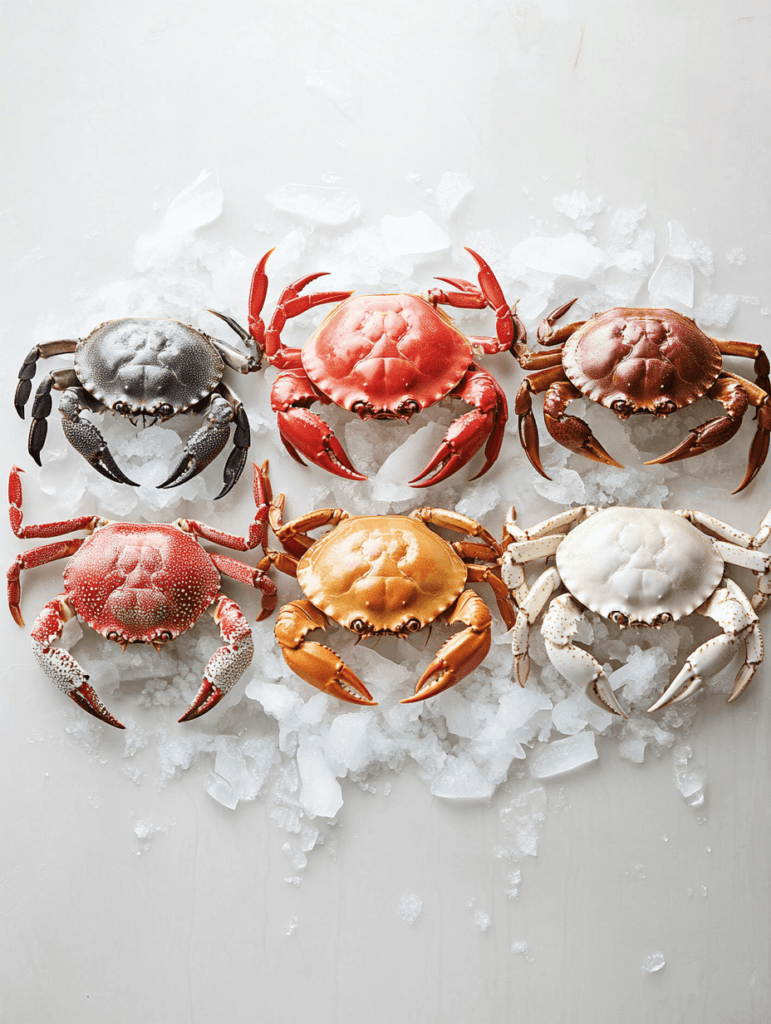
Not all crabs are created equal! While there are over 4,500 species worldwide, only a handful are highly prized for their meat. Each species has its own distinct taste, texture, and culinary use.
Blue Crab: The Iconic Choice for Maryland Crab Cakes
Found along the East Coast of the United States, blue crabs are known for their sweet, tender meat. They are the traditional choice for Maryland-style crab cakes, thanks to their delicate texture and mild flavor.
Dungeness Crab: West Coast Favorite
Dungeness crabs, native to the Pacific Northwest, offer plump, slightly nutty-tasting meat. Their large size makes them ideal for crab boils, pasta dishes, and butter-drenched crab feasts.
Alaskan King Crab: Sweet and Meaty
This massive species is famous for its thick, meaty legs. Alaskan king crab meat is sweet, tender, and incredibly rich, making it perfect for luxurious seafood dishes.
Snow Crab: Delicate Texture and Mild Flavor
Snow crabs are known for their long, easy-to-crack legs and delicate, slightly briny meat. They’re often used in buffet-style seafood platters and simple butter-dipped meals.
Stone Crab: Best for Claws and Sustainable Harvesting
Unlike other species, stone crabs are harvested for their claws—which regrow after being removed. Their claw meat is firm, slightly sweet, and often enjoyed cold with mustard sauce.
Want to know what to serve with crab dishes? Take a look at What to Serve with Crab Cakes for side dish inspiration!
Health Benefits of Crab Meat
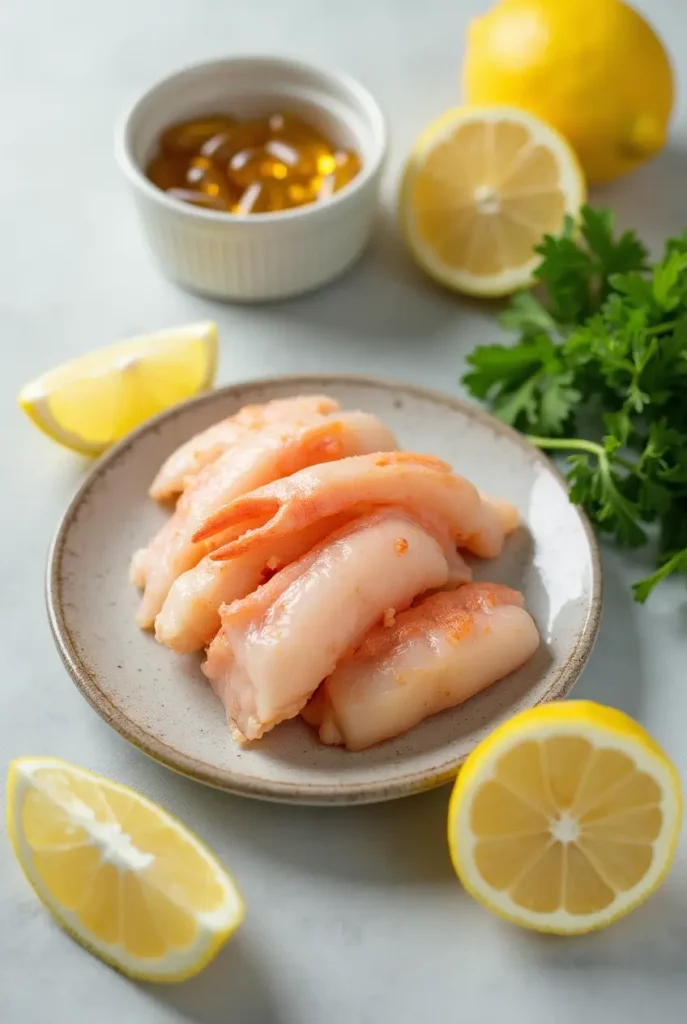
Crab meat isn’t just delicious—it’s packed with nutrients that support overall health. Whether you’re looking to build muscle, improve heart health, or boost your immune system, adding crab meat to your diet can be a smart choice.
High in Protein, Low in Fat: A Lean Protein Source
Crab meat is an excellent source of lean protein, making it ideal for those who want to build muscle or maintain a healthy weight. Unlike red meats, crab meat is low in saturated fats while still offering essential amino acids to support muscle recovery and strength.
Rich in Omega-3 Fatty Acids for Heart Health
Seafood lovers will appreciate that crab meat is naturally high in omega-3 fatty acids, which are known to:
- Reduce inflammation
- Lower bad cholesterol (LDL)
- Improve heart health and circulation
Regular consumption of omega-3s is linked to a lower risk of heart disease, making crab meat a heart-friendly choice.
Packed with Essential Vitamins and Minerals
Crab meat is a nutrient powerhouse, loaded with:
- Vitamin B12 – Essential for brain function and red blood cell production
- Zinc – Supports immune system health and wound healing
- Selenium – A key antioxidant that helps protect against cell damage
Eating a serving of crab meat can provide a significant portion of your daily vitamin and mineral needs.
Potential Risks: Mercury Levels and Allergies
While crab meat is a healthy choice, some people should exercise caution:
- Shellfish allergies are common and can cause severe reactions.
- Mercury levels in crab are generally low, but pregnant women should still consume seafood in moderation.
For a nutritious way to enjoy crab, try pairing it with a light and healthy sauce—check out this Crab Cake Sauce Recipe for a perfect match!
How to Buy and Store Crab Meat
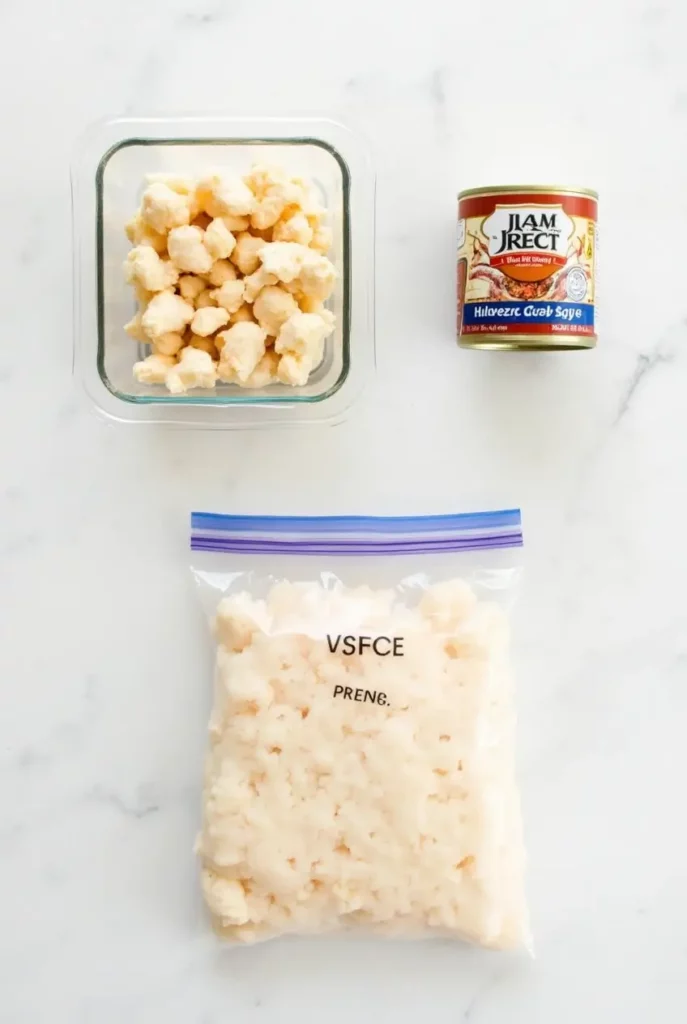
Buying high-quality meat and storing it properly is key to preserving its flavor and texture. Whether you prefer fresh, canned, or frozen crab, knowing what to look for ensures you get the best product.
Fresh vs. Canned vs. Frozen Crab : Which is Best?
Each type of crab has its advantages:
- Fresh Crab Meat – Offers the best flavor and texture, but must be used within a few days.
- Canned Crab Meat – Convenient and budget-friendly, but it may lack the sweetness and tenderness of fresh crab.
- Frozen Crab Meat – A great option for long-term storage, but it should be thawed properly before cooking.
If you’re making crab cakes or dips, lump or backfin crab meat is your best bet.
How to Spot High-Quality Crab Meat
When purchasing crab meat, keep these quality indicators in mind:
- Fresh crab meat should be white with a slight sheen—avoid anything with a grayish tint.
- A mild, ocean-like scent is ideal—if it smells fishy or ammonia-like, it’s past its prime.
- Check the label when buying canned or frozen crab to ensure minimal preservatives and additives.
Proper Storage Tips to Maintain Freshness
To extend the shelf life of your crab meat, follow these storage tips:
- Fresh crab meat should be kept on ice or in the coldest part of your fridge and used within 48 hours.
- Canned crab meat should be stored in a cool, dry place and refrigerated after opening.
- Frozen crab meat should be thawed in the fridge overnight—never at room temperature!
For a delicious way to use your fresh crab meat, check out this Crab Cake and Sauce Recipe for an easy and flavorful meal.
Cooking Crab Meat: Best Methods and Recipes
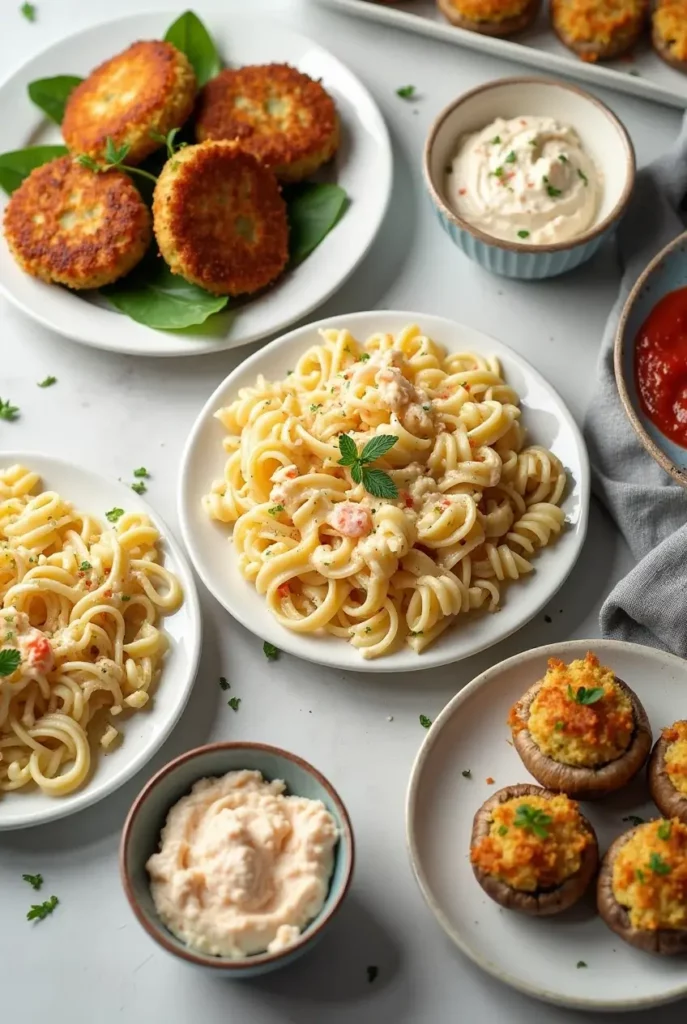
Cooking crab meat the right way brings out its sweet, delicate flavor while maintaining its tender texture. Whether you’re making a simple appetizer or an elegant seafood dish, using the correct cooking method ensures the best results.
How to Cook Fresh Crab Meat
Fresh meat can be cooked in several ways, depending on the recipe. Here are some of the best methods:
- Boiling – Drop crabs into salted boiling water and cook for 10–15 minutes, depending on size. This is the most common method for whole crabs.
- Steaming – Place crabs in a steamer basket over boiling water, cover, and steam for 15–20 minutes. This method keeps the meat juicy and flavorful.
- Sautéing – For pre-cooked or fresh crab meat, lightly sauté it with butter, garlic, and herbs for a rich, aromatic dish.
- Baking – Mix crab meat with seasonings, breadcrumbs, and eggs to make crab cakes. Bake at 375°F (190°C) for 12–15 minutes until golden brown.
- Grilling – Best for crab legs, grilling adds a smoky flavor. Brush with garlic butter and grill over medium heat for 4–6 minutes per side.
Best Crab Meat Recipes: From Crab Cakes to Soups
Crab meat works in a variety of dishes, from classic seafood favorites to creative new recipes. Here are some must-try ideas:
- Classic Cakes – A crispy, golden-brown treat made with lump crab meat, breadcrumbs, and spices.
- Creamy Crab Dip – A cheesy, indulgent dip perfect for bread or crackers.
- Crab Pasta – Toss crab meat with butter, garlic, and linguine for a simple yet elegant meal.
- She-Crab Soup – A creamy, flavorful Southern-style soup featuring crab meat and a touch of sherry.
- Stuffed Mushrooms with Crab – A crowd-pleasing appetizer filled with seasoned crab meat and melted cheese.
Crab Meat Pairings: What Goes Best with Crab?
Pairing crab meat with the right flavors elevates any dish. Some great combinations include:
- Butter & Garlic – Enhances the natural sweetness of crab.
- Citrus (Lemon or Lime) – Adds a bright, fresh contrast.
- Old Bay Seasoning – A classic blend that complements crab’s briny flavor.
- Pasta & Rice – Perfect bases to absorb crab’s rich taste.
Looking for a sauce to go with your crab dish? Try a delicious crab cake sauce for the perfect pairing!
Sustainable Crab Fishing and Ethical Consumption
Sustainability is crucial when it comes to enjoying crab meat responsibly. Overfishing and harmful fishing practices can deplete crab populations and damage marine ecosystems. By choosing sustainable crab options, you help protect the environment while still enjoying delicious seafood.
The Impact of Overfishing on Crab Populations
Crabs play an essential role in marine ecosystems, but overfishing is a major threat. When crabs are harvested faster than they can reproduce, populations decline, affecting the entire food chain. This can lead to:
- Disruptions in marine biodiversity
- Higher prices due to crab shortages
- Negative effects on small fishing communities
By supporting sustainable fishing practices, you help ensure that future generations can continue to enjoy crab meat.
How to Choose Sustainable Crab Meat
When buying crab meat, look for these signs of sustainability:
- Certified Sustainable Labels – Look for certifications like Marine Stewardship Council (MSC) or Aquaculture Stewardship Council (ASC).
- Local and Seasonal Crab – Buying from local fisheries reduces the environmental impact.
- Soft-Shell vs. Hard-Shell Crabs – Opt for soft-shell crabs, as harvesting them allows hard-shell populations to grow.
- Trap-Caught vs. Trawled Crab – Traps are eco-friendly and help prevent bycatch of other species.
Eco-Friendly Seafood Certifications to Look For
If you want to ensure that your crab meat comes from a sustainable source, check for these labels:
- Marine Stewardship Council (MSC) – Ensures crabs are caught responsibly and ethically.
- Best Aquaculture Practices (BAP) – A certification for farmed seafood that meets high sustainability standards.
- Seafood Watch – A program by the Monterey Bay Aquarium that ranks seafood based on sustainability.
Choosing eco-friendly seafood is an easy way to enjoy crab meat while protecting ocean life. Want to try a sustainable recipe? Check out this crab cake and sauce recipe for an ethical and tasty dish!
Print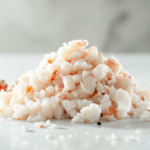
Crab Meat: A Guide to Types, Nutrition, and Delicious Recipes
- Total Time: 20 minutes
- Yield: 8 servings 1x
- Diet: Vegetarian
Description
This Burrata Bruschetta is a delicious and elegant twist on the classic Italian appetizer, featuring creamy burrata cheese, juicy tomatoes, fresh basil, and a drizzle of balsamic glaze.
Ingredients
- 1 baguette, sliced into 1-inch rounds
- 3 tablespoons olive oil (for brushing)
- 1 pint cherry tomatoes, halved
- ¼ cup fresh basil, torn
- 1 clove garlic, peeled
- 10 ounces burrata cheese
- 1 tablespoon balsamic glaze (optional)
- Salt and pepper to taste
Instructions
- Preheat your oven to 375°F (190°C).
- Arrange the baguette slices on a baking sheet and brush both sides with olive oil.
- Toast the baguette slices in the oven for 8–10 minutes, or until golden brown and crispy.
- While the bread is toasting, prepare the topping by combining halved cherry tomatoes, torn basil leaves, salt, pepper, and balsamic glaze in a bowl.
- Once the bread is ready, remove it from the oven and let it cool slightly.
- Rub each toasted baguette slice with the peeled garlic clove for extra flavor.
- Add a generous portion of burrata cheese on top of each baguette slice, and spoon the tomato mixture over it.
- Drizzle with balsamic glaze (optional) and serve immediately.
Notes
- You can add a little olive oil and lemon juice to the tomato mixture for extra flavor.
- The bruschetta is best served immediately while the bread is still crispy.
- Prep Time: 10 minutes
- Cook Time: 10 minutes
- Category: Appetizer
- Method: Toasting, Assembling
- Cuisine: Italian
Nutrition
- Serving Size: slice
- Calories: 100 kcal
- Sugar: 4 g
- Sodium: 150 mg
- Fat: 7 g
- Saturated Fat: 3 g
- Unsaturated Fat: 2 g
- Trans Fat: 0 g
- Carbohydrates: 10 g
- Fiber: 1 g
- Protein: 4 g
- Cholesterol: 15 mg
Keywords: bruschetta, burrata, appetizer, Italian, easy recipe

